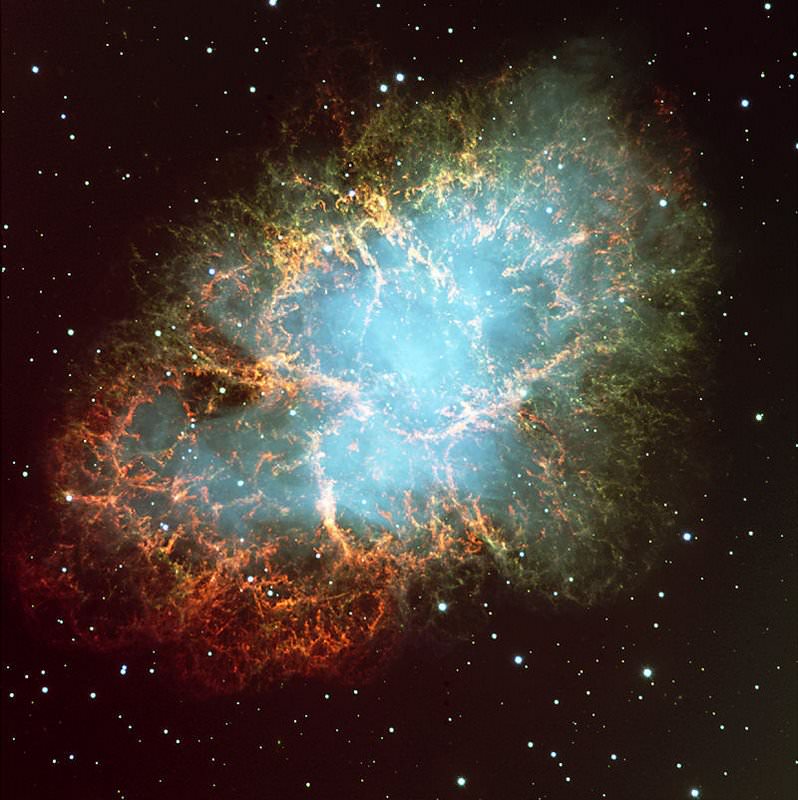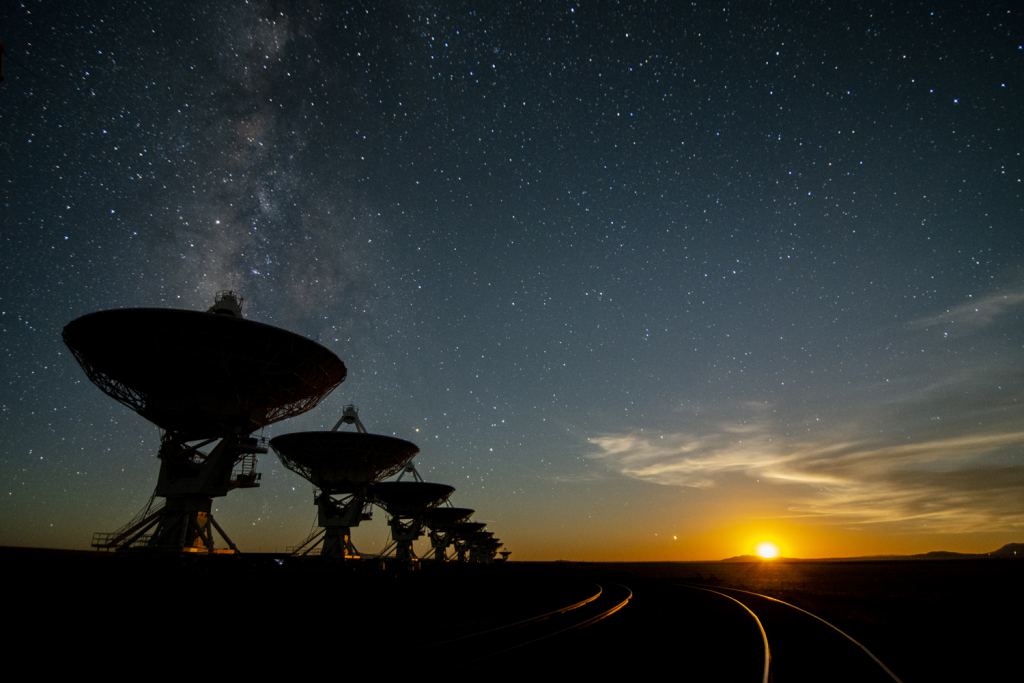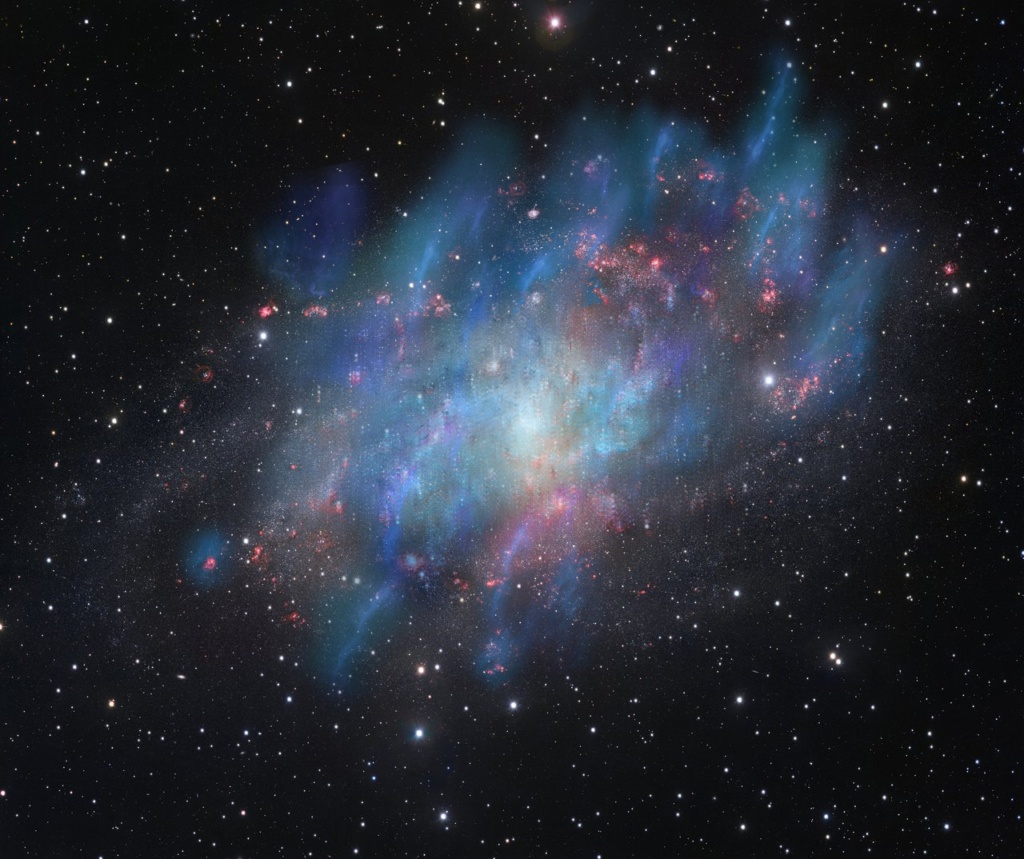Too Many Supernovae Can Slow Star Formation in a Galaxy
By Carolyn Collins Petersen
Interstellar winds are powerful agents of change. For one thing, they can interrupt or shut down the process of star birth completely. That’s what a team of astronomers using the Karl Jansky Very Large Array in New Mexico found when they studied the galaxy M33. They also learned that speedy cosmic rays play a huge role in pushing those winds across interstellar space.
The idea that winds from supernova explosions and jets from galactic cores could “quench” star formation isn’t new. Essentially they rob protostars of the gas and dust they need to form.

Now here’s an interesting twist. When those supernovae occur, they eject large numbers of cosmic rays. The more supernovae that “pop off”, the more cosmic rays are emitted. Then they exert more influence on the interstellar winds that ultimately end up destroying star birth nurseries.
“We have seen galactic winds driven by cosmic rays in our own Milky Way and the Andromeda galaxy, which have much weaker rates of star formation, but not before in a galaxy such as M33,” said Fatemah Tabatabaei, of the Institute for Research in Fundamental Sciences in Iran. Tabatabaei and a team of scientists used the VLA, the Effelsberg radio telescope in Germany, and a selection of millimeter-wave, visible-light, and infrared telescopes to observe this neighboring galaxy.
Cosmic Rays, Star Formation, and Galaxies
Star formation and galaxy-building are intimately connected. Generally speaking, galaxies start out as small collections of stars, which form in hydrogen-rich clouds. Galaxies grow by merging together. The smallest ones mingle to create bigger ones. The bigger ones also collide and merge. Often enough, those mergers spur new episodes of star birth. Our own Milky Way grew this way, and so did M33.
Stars continue to form in clouds of hydrogen gas laced with dust scattered throughout galaxies. Bursts of star formation eat up the available gas and dust and that affects the galactic shape (or morphology). In addition, as stars age, they contribute the elements they make in their cores back to the interstellar medium (ISM). Those materials end up in the next generations of stars and planets. And, as the team led by Tabatabaei has found, the most massive stars generate cosmic rays when they die. These fast-moving particles push winds through interstellar space and interact with magnetic fields.
Large amounts of cosmic rays build up a pressure front that slams into stellar creches filled with gas and dust. The wind action blasts apart the clouds and carries away the needed stellar building blocks. Essentially, the cosmic rays drive winds that quench star formation. That can be pretty damaging to a growing galaxy, which should be rich with star birth regions. This is why it’s important to study the ISM and trace the creation and emission of cosmic rays during star death.
What VLA Observed at M33
VLA observations allowed Tabatabaei’s team to study the ISM in M33 in regions as small as 30 parsecs (just under a hundred light-years) across. They could look at star-forming regions as well as areas where no star birth was taking place. Both areas are important to understand what processes and events can affect star formation.

“The VLA observations indicated that cosmic rays in M33 are escaping the regions where they are born, making them able to drive more extensive winds,” said William Cotton, of the National Radio Astronomy Observatory. Based on these observations, the astronomers suspect that many supernova explosions and supernova remnants in M33’s highly active star formation regions made such cosmic ray-driven winds more likely.
“This means that cosmic rays probably are a more general cause of galactic winds, particularly at earlier times in the universe’s history, when star formation was happening at a much higher rate,” Tabatabaei said. She added, “This mechanism thus becomes a more important factor in understanding the evolution of galaxies over time.”
The team hopes that similar studies in large samples of galaxies beyond M33 will give more information about the cosmic ray-driven winds that can disrupt star formation. In particular, such facilities as the Square Kilometer Array (SKA) and ngVLA (next generation VLA) should be well-suited to survey other galaxies in both the modern universe as well as galaxies earlier in time.
For More Information
VLA Finds Cosmic Rays Driving Galaxy’s Winds
Cloud-scale Radio Surveys of Star Formation and Feedback in Triangulum Galaxy M 33: VLA Observations
The post Too Many Supernovae Can Slow Star Formation in a Galaxy appeared first on Universe Today.

October 31, 2022 at 06:19AM
via Universe Today read more...

Post a Comment